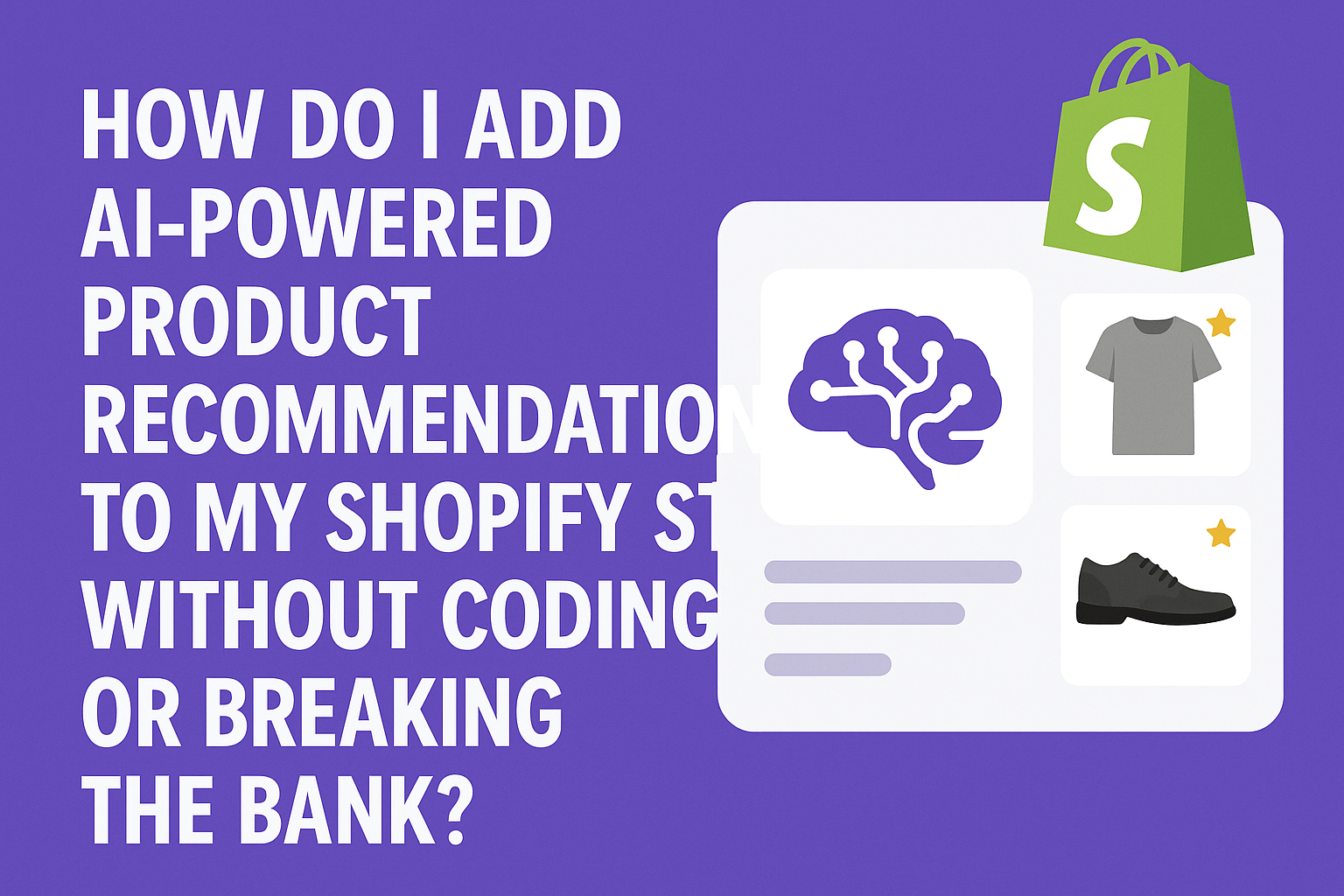Adding AI-powered product recommendations to a Shopify store no longer requires a developer or a six-figure budget. Today’s ecosystem includes built-in Shopify features and no-code apps that plug in, read your catalog and customer behavior, and serve personalized suggestions across product pages, cart pages, and email — often with simple point-and-click configuration. This post walks through practical, low-cost ways to deploy recommendations, how to choose the right option, and quick steps to measure success without breaking the bank.
Whether you want “people also bought” widgets, cross-sell suggestions in checkout, or personalized home page carousels, you can get live results in hours — not weeks. Below are realistic approaches, recommended choices, and low-effort setup steps focused on cost-effectiveness and reliability.
Start Smart: Use Built-in Shopify Tools and Friendly Apps
The fastest way to add AI recommendations is to start with what’s already available or with a proven no-code app. Shopify provides native product recommendation blocks (depending on your theme and Shopify plan) that use simple algorithms to surface related items. If you need more sophistication — like collaborative filtering or behavior-based personalization — choose a well-rated app from the Shopify App Store with a free plan or trial.
Consider these practical criteria when evaluating options:
- Integration: Does the app install with one click and auto-populate recommendation slots, or does it require theme code changes?
- Cost structure: Look for free or low-cost tiers, transparent tiered pricing, and whether the app charges by sessions, revenue share, or flat fee.
- Features: Prioritize apps that offer product, cart, and email recommendations, plus simple A/B testing and basic analytics.
- Performance: Ensure the app uses asynchronous loading and CDN caching to avoid slowing pages.
Quick setup checklist
- Try Shopify’s native recommendation blocks first (free and fast).
- Install a no-code recommendation app with a free trial if you need personalization beyond basic rules.
- Use apps that auto-inject widgets or provide theme editor blocks to avoid custom coding.
- Keep an eye on page speed and disable any widgets you don’t use.
Step-by-Step: Add Recommendations Without Coding
Here’s a simple, non-technical workflow you can follow to add AI recommendations to your store and keep costs low:
- Audit your catalog and decide where recommendations will add value: product pages, cart, homepage, or checkout post-purchase upsell.
- Try Shopify’s native product recommendations or find a no-code app with a free plan/trial. Install it directly from the Shopify App Store.
- Use the app’s visual editor or Shopify’s theme customizer to place widgets. Many apps let you choose layout (carousel, grid) and rule types (similar items, also bought, trending, complementary).
- Configure simple business rules: exclude out-of-stock items, prioritize high-margin SKUs, and set minimum/maximum numbers of suggestions to keep layouts clean.
- Preview across mobile and desktop. Ensure images, prices, and CTAs display correctly and that recommendations don’t slow the page noticeably.
- Run a short trial (2–4 weeks). Monitor conversion rate, average order value (AOV), and click-through rate (CTR) for recommended items.
Most no-code apps allow you to manage recommendations via toggles rather than code, and many provide templated layouts that work with modern Shopify themes. If the app offers a snippet for manual placement, copy-paste that into a theme section — no programming knowledge required.
Optimize, Measure, and Keep Costs Down
Adding recommendations is only the start — optimization and measurement determine ROI. Track a few key metrics and apply small iterative changes to increase impact without increasing spend.
Key metrics to monitor:
- Click-through rate (CTR) on recommendation widgets — shows engagement.
- Conversion rate and AOV for sessions with recommendations vs. baseline — shows revenue impact.
- Bounce rate and page load speed — keeps an eye on user experience and SEO effects.
Optimization tips that don’t require extra budget:
- Use fewer, more relevant suggestions — three to five picks are typically enough.
- Test placement: hero area vs. below product description vs. cart upsell to see where your audience converts best.
- Promote high-margin or overstock items through recommendation rules rather than discounts.
- Leverage seasonal or collection-based recommendations to reflect current merchandising priorities.
- Run A/B tests using the app’s built-in tools or Shopify’s experiments to validate changes before permanent rollout.
Privacy and performance considerations: ensure any app you choose is GDPR/CCPA compliant and uses asynchronous loading to avoid blocking rendering. Many reputable apps include privacy settings and reasonable data retention defaults.
Conclusion
Adding AI-powered product recommendations to your Shopify store without coding or breaking the bank is entirely achievable: start with Shopify’s built-in tools, evaluate no-code apps with free tiers, and follow a short setup and testing workflow. Focus on clear measurement (CTR, AOV, conversion lift), optimize placements and rules, and prioritize page speed and privacy. Ready to get started? Install a trusted no-code recommendation app or enable Shopify’s native recommendation blocks today, run a two-week test, and watch how relevant suggestions increase your average order value and customer satisfaction.

